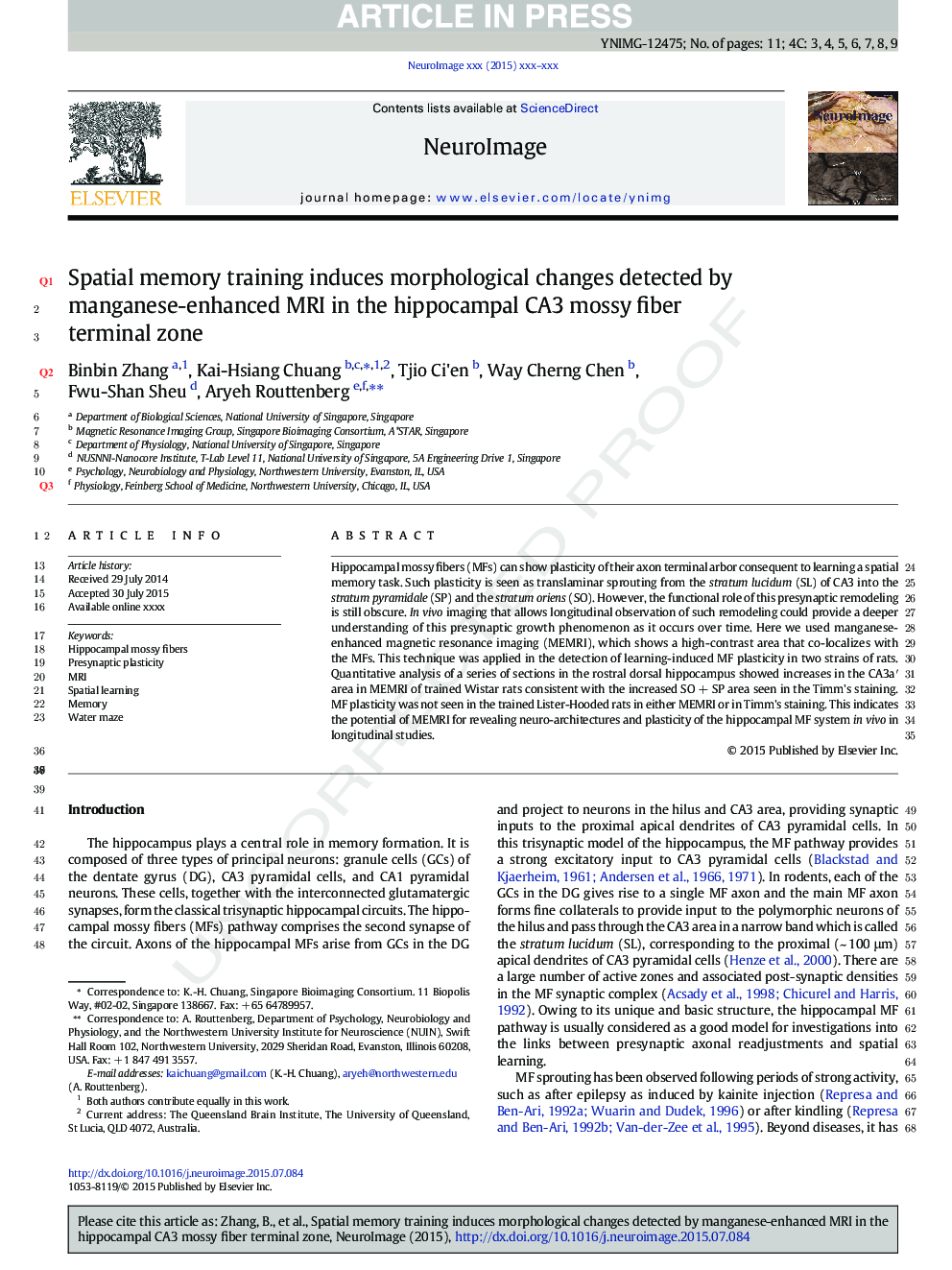| Article ID | Journal | Published Year | Pages | File Type |
|---|---|---|---|---|
| 6024023 | NeuroImage | 2016 | 11 Pages |
Abstract
Hippocampal mossy fibers (MFs) can show plasticity of their axon terminal arbor consequent to learning a spatial memory task. Such plasticity is seen as translaminar sprouting from the stratum lucidum (SL) of CA3 into the stratum pyramidale (SP) and the stratum oriens (SO). However, the functional role of this presynaptic remodeling is still obscure. In vivo imaging that allows longitudinal observation of such remodeling could provide a deeper understanding of this presynaptic growth phenomenon as it occurs over time. Here we used manganese-enhanced magnetic resonance imaging (MEMRI), which shows a high-contrast area that co-localizes with the MFs. This technique was applied in the detection of learning-induced MF plasticity in two strains of rats. Quantitative analysis of a series of sections in the rostral dorsal hippocampus showed increases in the CA3aâ² area in MEMRI of trained Wistar rats consistent with the increased SOÂ +Â SP area seen in the Timm's staining. MF plasticity was not seen in the trained Lister-Hooded rats in either MEMRI or in Timm's staining. This indicates the potential of MEMRI for revealing neuro-architectures and plasticity of the hippocampal MF system in vivo in longitudinal studies.
Keywords
Related Topics
Life Sciences
Neuroscience
Cognitive Neuroscience
Authors
Binbin Zhang, Kai-Hsiang Chuang, Ci'en Tjio, Way Cherng Chen, Fwu-Shan Sheu, Aryeh Routtenberg,
